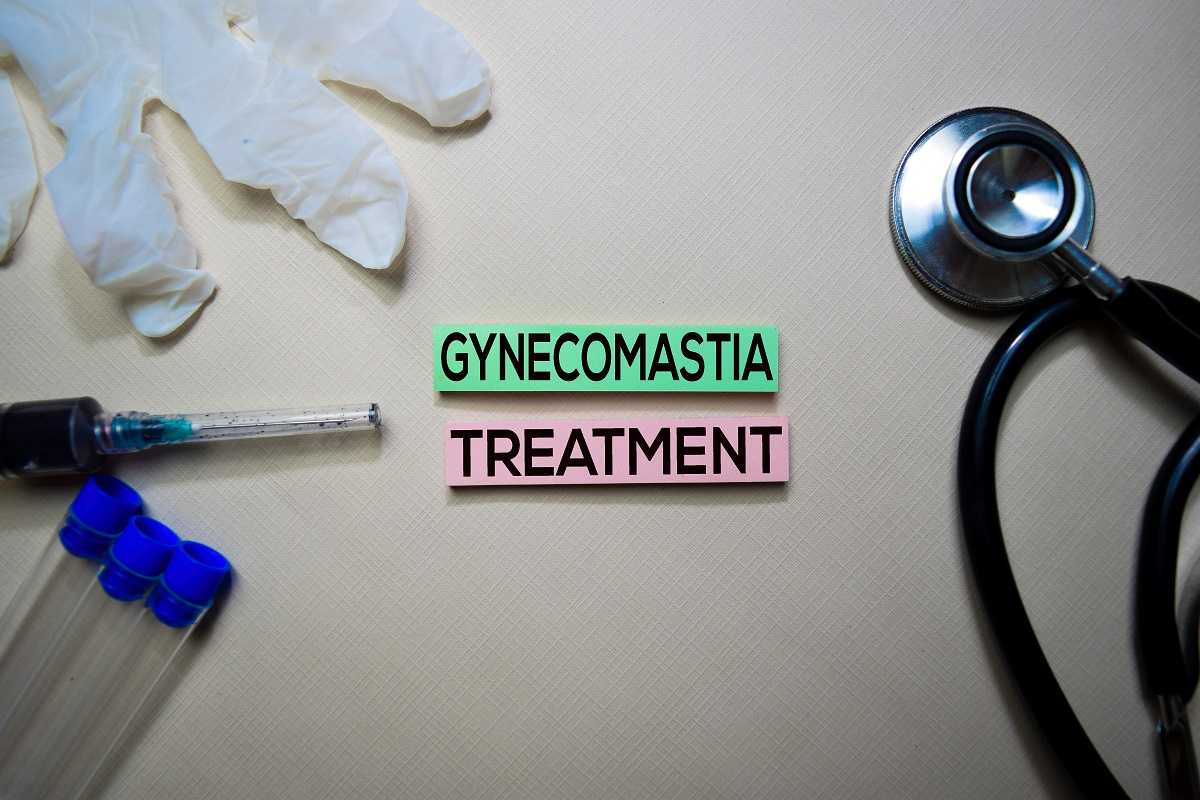Both men and women have mammary glands that develop differently according to sex during puberty. In women, the mammary glands grow by the action of female hormones and go through different stages according to the menstrual cycle, pregnancy, and lactation. These glands exist in men but do not develop as in women. Thus, when we talk about breast problems, we usually think of women, leaving aside men. Still, they can also suffer from various conditions and pathologies.
What is gynecomastia?
Gynecomastia is the enlargement of one or both breasts in men because of the abnormal growth of the mammary glands caused by a hormonal imbalance. Despite what is thought, gynecomastia affects 40 to 60% of the male population between 18 and 50. It is essential to differentiate gynecomastia from adipomasty. Adipomasty is the growth of the breasts because fat accumulation is more common in obese or overweight men and is confused with gynecomastia.
Why does gynecomastia occur?
To understand it, we know that the mammary glands regulate three main hormones, estrogens, progesterone, and prolactin. Estrogens and progesterone handle their growth and development. When puberty arrives, these hormones increase their levels in females and produce changes in the body, including breast enlargement. In males, these hormones maintain low concentrations, so the breasts do not develop. Based on this, when gynecomastia occurs in men, there is a hormonal imbalance, where estrogens and progesterone (female hormones) increase or androgens (male hormones) decrease.
What are the causes?
Several causes can produce gynecomastia. We can divide these into:
Physiological
Regular hormonal changes, characteristic of the human body, produce them and disappear naturally. It is common in babies because of the action of maternal estrogens and adolescents during development. The latter case resolves naturally after six months to 2 years or at the end of adolescence. Physiological gynecomastia is a bilateral, smooth consistency and symmetrical distribution.
Medication
Drug-induced gynecomastia is more common than it seems. Some drugs in order of frequency that can produce are:
Drugs that inhibit androgen synthesis or activity
For example, cyproterone, which is an anti-androgenic, or finasteride and dutasteride, which are 5-alpha reductase inhibitors. These drugs inhibit the action of testosterone, favor estrogen activity, and are used to treat prostatic hypertrophy or prostate cancer.
Antimicrobials
Such as ketoconazole, metronidazole, or isoniazid, used to treat microbial infections caused by bacteria, fungi, and parasites.
Antineoplastics
Such as methotrexate, and alkylating drugs, among others, with antitumor effects.
Cardiovascular
Enalapril, captopril, amiodarone, spironolactone, nifedipine, and methyldopa are some drugs used to treat cardiac pathologies with gynecomastia side effects. 5 to 10% of men taking spironolactone abandon the treatment because of its impact on the mammary glands.
Action on the central nervous system
Haloperidol showed gynecomastia as a negative side effect. Other drugs, such as diazepam, phenytoin, opioids, and tricyclic antidepressants, have also been associated with this effect.
Antiulcer drugs
Ranitidine, metoclopramide, cimetidine, and the famous omeprazole can cause gynecomastia.
Hormones
Estrogens, anabolic steroids, human chorionic gonadotropin, growth hormone or somatropin, and androgens are used to treat hormone deficiencies.
Other drugs
- Efavirenz is used in the treatment of AIDS.
- Recreational drugs, illicit drugs, and alcohol.
- Psychoactive such as marijuana, methadone, heroin, amphetamines, and alcohol are closely associated with this effect.
- Medical conditions
Different medical conditions can cause hormonal imbalances and produce gynecomastia as a symptom. Some of them are:
Hypogonadism
Here, the male sex glands (testes) do not function properly, and there is a decrease or absence of male sex hormone production. Hypogonadism can occur in Klinefelter’s syndrome or pituitary insufficiency.
Tumors
Prolactinoma is one tumor that produces alterations in the mammary glands. It appears in the pituitary gland of the brain. It creates excessive prolactin, the hormone that stimulates milk production. Other tumors, such as testicular or adrenal tumors, can produce gynecomastia.
Hyperthyroidism
When the thyroid gland is overactive and secretes too much thyroid hormone (thyroxine), alterations in the metabolism of sex hormones can occur. One of these is an increased conversion of testosterone to estradiol, resulting in gynecomastia.
Renal insufficiency
Many people with renal insufficiency and receiving dialysis present hormonal changes that can produce gynecomastia.
Hepatic insufficiency and cirrhosis
When the liver has altered, the metabolism of many hormones can’t be produced or is changed, including sex hormones. Medications used in this condition can also produce gynecomastia.
Breast cancer
Men can also have breast cancer; when this happens, one symptom could be unilateral or single-breast gynecomastia.
Malnutrition and starvation
Depriving the body of adequate nutrition produces hormonal alterations, especially testosterone levels. As these levels drop, estrogens that remain the same prevail and can have gynecomastia.
Unknown or idiopathic
It is one of the most frequent causes and can occur at any age. There is no apparent cause, and there are no symptoms apart from breast enlargement or other findings.
Other
Using herbal products such as lotions, oils, and soaps made from tea trees or lavender is associated with abnormal breast growth.
What are the symptoms of gynecomastia?
The primary symptom is an abnormal growth of one or both breasts that is accompanied by:
• Pain.
• Swelling.
• Breast tenderness.
• Nipple tenderness, especially when rubbing against clothing.
• Appearance of secretions through the nipple.
How to treat gynecomastia?
To treat gynecomastia, first, we must treat the cause directly. Since there are many causes of this disorder, it is essential to consult a doctor for the first symptoms. To find the cause, your doctor will perform a complete interrogation, a physical examination, blood tests mainly oriented to the hormonal part, and imaging studies. Subsequently, based on the diagnosis, they can administer treatment.
Where the gynecomastia is physiological, there is no need to administer treatment because it will disappear on its own after a specific period. When gynecomastia is medicated, then the drug that produces it is suspended. However, some drugs have been used to treat gynecomastia and have given excellent results. Among them:
Tamoxifen
This is one of the best and most studied drugs to treat gynecomastia. It is a selective estrogen receptor modulator (SERM) and is the first-line drug treatment. Tamoxifen has successfully reduced breast size and improved symptoms, such as pain and tenderness. In 50 to 80% of cases, it shows complete remission in a few years. We have observed no recurrences or significant side effects.
Raloxifene
This is also a selective estrogen receptor modulator that blocks the effects of estrogens in the breast. However, we don’t know the long-term effects.
Clomiphene
This drug, known to be part of fertility treatment in women, can also successfully stimulate the hypothalamus in men to cause an increase in testicular testosterone production. Thus, clomiphene is a therapeutic option to correct hypogonadism and gynecomastia.
Human Chorionic Gonadotropin (hCG)
Women produce this hormone in pregnancy, first by the embryo and then by the placenta. Its function is to prevent the corpus luteum of the ovary from disintegrating to maintain the production of progesterone to maintain pregnancy.
In men, we can administer hCG as an injection to stimulate the cells that produce testosterone (Leydig cells in the testes). In other words, hCG treats low testosterone levels by increasing testosterone production. This is ideal for treating gynecomastia, as it would restore hormonal balance. However, using it for too long or at too high a dose can inhibit the body’s natural testosterone production in the long term. For this reason, it should be used under medical signs and supervision. Another use of hCG is as a tumor marker for detecting testicular and other tumors.
Gonadorelin
This synthetic hormone is administered intravenously to control the gonadal function of men and women since it can stimulate the production of sex hormones, in this case, testosterone. Its composition is identical to gonadorelin, produced naturally by the hypothalamus. It is also used to diagnose hypothalamus and pituitary gland tumors, such as prolactinoma.
Danazol
This androgenic drug decreases the production of follicle-stimulating hormone (FSH), luteinizing hormone (LH), and estrogen, which allows for increased testosterone levels.
Anastrozole
This drug has also been described in the treatment of gynecomastia as a selective inhibitor of aromatase (an enzyme that converts testosterone into estradiol). It manages estradiol levels, decreases estrogen levels, and increases testosterone concentration.
Surgery
It eliminates the mammary glandular tissue, and we use this option as an alternative treatment when breast reduction has not been achieved after years. Gynecomastia represents an aesthetic, emotional, and psychological problem for many men, so there are cases where this option is used.
Is gynecomastia preventable?
Yes, but not completely. The way to prevent gynecomastia is to reduce the risk factors that can be modifiable, that is:
• Not consuming drugs such as marijuana, amphetamines, heroin, and methadone, among others.
• Avoid or reduce alcohol consumption.
• Avoiding the use of anabolic steroids.
• Do not self-medicate.
• Avoid using herbal products containing tea tree or lavender.
Using Testosterone Replacement Therapy for Gynecomastia Treatment
After using Testosterone Replacement Therapy (TRT), you will be able to treat your low T levels. If your gynecomastia is caused by low testosterone, you will soon see a reduction in the swelling of your breast tissue.
Keep in mind that if your body produces sufficient testosterone levels, using TRT can help bring your testosterone levels back into a healthy range. Make sure you take the necessary steps to check your testosterone before gynecomastia treatment.
Are you interested in learning more about how you could potentially benefit from testosterone replacement therapy? Let’s talk. Click to schedule a free consultation today!
Questions and Answers
Gynecomastia is the enlargement of breast tissue in males, often caused by an imbalance between estrogen and testosterone levels.
Common causes include hormonal imbalances, certain medications, chronic illnesses like liver or kidney disease, obesity, substance use (e.g., alcohol or marijuana), and natural hormonal changes during puberty or aging.
Yes, it is relatively common, especially during puberty and in older men. It affects up to 60–70% of adolescent boys and 30–70% of adult men at some point.
Diagnosis is typically based on a physical examination, medical history, and sometimes imaging tests like ultrasound or mammography. Blood tests may also be done to check hormone levels.
Symptoms include swollen breast tissue, tenderness, and sometimes pain or sensitivity in the breast area. It may occur on one or both sides.
Yes, in many cases, particularly during puberty, gynecomastia resolves without treatment as hormone levels stabilize. This usually happens within six months to two years.
Treatments include addressing the underlying cause (e.g., stopping medications or treating a health condition), medications to balance hormones, or surgery such as liposuction or mastectomy for persistent cases.
While not all cases are preventable, maintaining a healthy lifestyle, avoiding substances like anabolic steroids and certain drugs, and managing health conditions can reduce the risk.
Gynecomastia involves glandular tissue enlargement, while pseudogynecomastia refers to fat accumulation in the breast area without glandular involvement, typically linked to obesity.
A doctor should be consulted if there is significant pain, rapid growth, asymmetry, a lump that feels hard, or concerns about the condition’s psychological impact.

